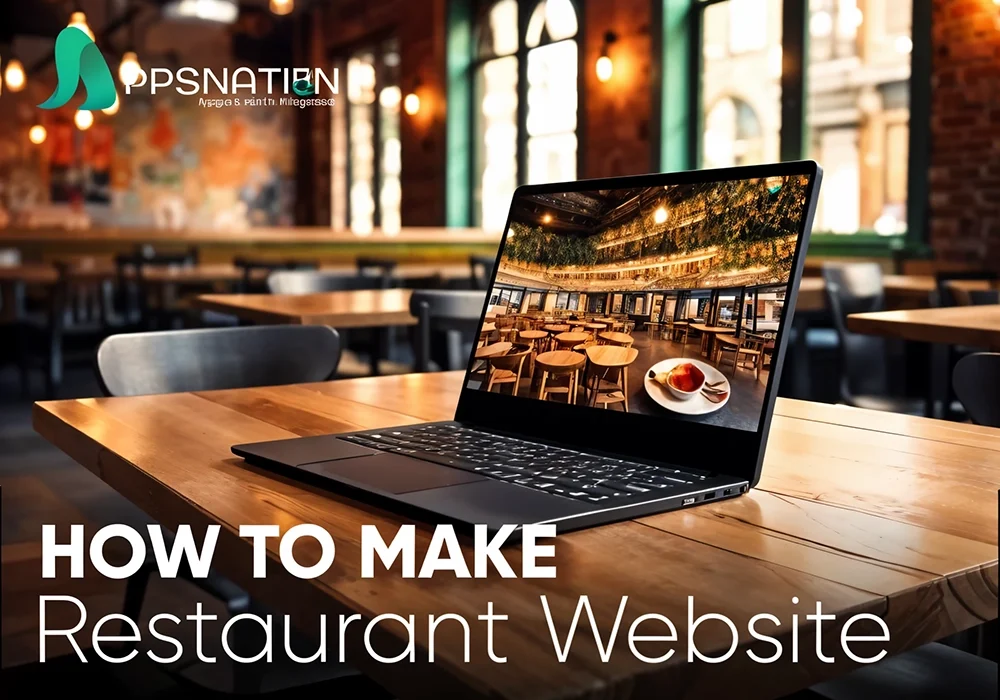As a restaurant owner, you know how important it is to attract customers and build your brand. One of the most effective ways to do this is by having a strong online presence, and a great way to achieve this is by creating a restaurant website.
In today’s digital age, consumers expect to be able to research and make informed decisions about the places they dine at, and a website gives them the information they need to choose your restaurant.
This blog will discuss how to build a Restaurant website in WordPress in 10 easy steps.
Table of Content
| 1 | How to build a Restaurant Website in WordPress – 10 Easy Steps |
| 2 | Choose Your Website Hosting Plan |
| 3 | Register Domain |
| 4 | Install WordPress |
| 5 | Select & Design Theme For your Restaurant Website |
| 6 | Customize your WordPress Theme |
| 7 | Write your Restaurant Website Copy |
| 8 | Figure Out what plugins you need |
| 9 | Add Your restaurant address on your website |
| 10 | Test out your restaurant website |
| 11 | Publish and Promote |
| 12 | Which theme is best for a restaurant? |
| 13 | Which color is generally avoided in restaurants? |
| 14 | How do restaurants create SEO? |
| 15 | Conclusion |
How to build a Restaurant Website in WordPress (10 Easy Steps)
1. Choose Your Website Hosting Plan
Your Website Hosting Plan: In this section, I will guide you on choosing a reliable and affordable hosting plan for your restaurant website. You can talk about the different types of hosting available and their pros and cons.
Here are some factors to consider when choosing a web hosting service for a restaurant website.
i. Purpose: Consider the purpose of your website. Shared hosting may be sufficient if you only need a basic website with a few pages. However, if you plan to have a large, high-traffic website, you may need a more robust solution, such as dedicated or cloud hosting.
ii. Scalability: Make sure your chosen hosting plan can grow with your restaurant’s needs. Look for a plan that offers the option to upgrade as your website grows.
iii. Performance: The speed and reliability of your website are important factors in providing a good user experience. Look for a hosting provider with fast, reliable servers and a good uptime reputation.
iv. Support: Customer support is important if you need help with your website. Look for a hosting provider that offers 24/7 support through phone, email, or live chat.
v. Cost: Hosting costs can vary greatly. Consider your budget and choose a plan that offers the features you need at a price you can afford.
vi. Features: Consider the features you need, such as email hosting, backups, and SSL certificates, and choose a hosting provider that offers these features.
vii.Security: Your website and customer data are of utmost importance. Look for a hosting provider with regular backups, firewalls, and virus protection.
By considering these factors and doing your research, you can choose a hosting web service that meets the needs of your restaurant website and provides a reliable, secure, and user-friendly experience for your customers.
2. Register Domain
Here are the steps to register a domain for a WordPress website.
i. Choose a domain name: Select a domain name that represents your restaurant and is easy to remember. You can use a domain name registrar such as Namecheap or GoDaddy to check the availability of your desired domain name.
ii. Select a domain registrar: Choose a domain registrar that offers the features you need at a price you can afford. Some popular options include Namecheap, GoDaddy, and HostGator.
ii. Create an account: Create an account with your selected domain registrar. You must provide personal information, such as your name, address, and email.
iv. Check for promotions: Many domain registrars offer promotions and discounts for first-time customers. Check for any promotions that may apply to your purchase.
v. Register your Domain: Enter your domain name and select the extension (e.g., .com, .net, org). Review the information you have provided and proceed to checkout.
vi. Pay for the Domain: Choose your payment method and complete the transaction. The cost of a domain name can vary, but it typically ranges from $10 to $20 per year.
vii. Confirm your registration: After completing the transaction, you will receive a confirmation email from your domain registrar. Follow the instructions in the email to complete the registration process.
viii. Connect the Domain to your hosting: Log in to your hosting account and follow the instructions to connect your newly registered Domain to your hosting account. This is typically done through the hosting provider’s control panel.
Following these steps, you can successfully register a domain for your WordPress website and connect it to your hosting account.
3. Install WordPress
Here are the steps to install WordPress.
i. Choose a web host: Choose a web host that offers a one-click installation of WordPress. Some popular web hosts that offer this feature include Bluehost, SiteGround, and WP Engine.
ii. Create an account: Create an account with your selected web host. Provide the required information, including your name, address, and email.
iii. Log into your account: Log in to your web host account and access the control panel.
iv. Find the WordPress installation: Look for a tool or option to install WordPress, such as “WordPress” or “Website Builder.” This may be in the control panel or the hosting account’s dashboard.
v. Start the installation: Begin the installation process by clicking on the WordPress installation tool or option. Follow the instructions to complete the installation process.
vi. Choose your settings: During the installation process, you will be prompted to provide information such as your site title, username, and password. Choose the settings that are appropriate for your restaurant website.
vii. Complete the installation: Once the installation process is complete, you will be taken to the WordPress dashboard. Log in using the username and password you specified during the installation.
4. Select & Design a Theme For your Restaurant Website
You can easily select WordPress themes for your restaurant website. There are different varieties of professional themes available in the market. I recommend you use the Divi theme; with the help of Divi premade layouts, you can build a professional restaurant website with just simple drag and drop.
5. Customize your WordPress Theme
Once you select the premium theme I recommended, you Divi or go with the free one. After that, you can customize it by using the website builder again if you bought the Divi theme, so you can easily customize it with the help of the Divi page builder, or you can also use the free elementor page builder.
6. Write your Restaurant Website Copy
Once you have designed your restaurant website, you need SEO friendly website script or copy for your restaurant website, so your website can rank on google. Great Website Copy can help you to increase your conversion rates.
7. Figure Out what plugins you need
Figure Out what plugins you need. The different plugins available for WordPress and how to choose the right ones for their restaurant website.
You can choose plugins for online ordering, reservations, and contact forms.
8. Add Your restaurant address on your website
Here are the steps to add your restaurant’s address to your website.
i. Install a plugin: To display your restaurant’s address, you can use a plugin specializing in creating and displaying maps. Some popular plugins include Google Maps, MapPress, and OpenStreetMap.
ii. Create a map: Use the plugin to map your restaurant’s location. You may need to enter the address, latitude, longitude, or marker information to display your location accurately.
iii. Embed the map: Copy the code generated by the plugin and paste it into your website’s content area or use a widget to display the map.
iv. Customize the map: The map’s appearance and settings match your website’s style. This may include changing the map size, zoom level, and marker icons.
v. Test the map: Test the map on your website to ensure that it displays correctly and that the information is accurate.
By following these steps, you can add a map of your restaurant’s location to your website, making it easy for customers to find your location and get directions.
9. Test out your restaurant website
Once you are done with your website development and design, you must test your restaurant website. In this stage, you have to fix the bugs and errors of your website so your website can work efficiently.
10. Publish and Promote
After testing it out, you can publish or live your website. After publishing your website, you now have to promote your website. For that, you can do SEO and run Paid advertisements if you use both marketing strategies parallelly, so you’ll see amazing results.
If you don’t know how to do Digital Marketing for your Restaurant website, contact our Team Appsnation.co for a free consultation. You can also contact us if you want us to make your professional WordPress Restaurant Website at an affordable price.
F.A.Qs
Which theme is best for a restaurant?
As I told you, I always recommend Divi Theme for your restaurant website if you don’t have a budget, so you can go with free WordPress themes.
Which colour is generally avoided in restaurants?
The colour that is generally avoided in restaurants is red. This is because red is often associated with a warning, danger, and negativity and can make diners anxious or uncomfortable.
In addition, red is an appetite suppressant, which could negatively impact the dining experience.
While red can be used as an accent colour, it is generally recommended to avoid using it as the dominant colour in a restaurant setting. Instead, neutral colours such as white, cream, beige, and brown are often used to create a calm and welcoming atmosphere.
How do restaurants create SEO?
Search engine optimization (SEO) is important for promoting your restaurant online and increasing its visibility in search results. Here are some steps to help create SEO for your restaurant’s website:
i. Conduct keyword research: Identify the keywords and phrases your potential customers use to search for restaurants like yours. Use tools such as Google Keyword Planner or SEMrush to help with this.
ii. Optimize your website content: Use the keywords you’ve identified in your website’s content, including the page titles, headings, and body text. Ensure that the content is high-quality and provides value to your audience.
iii. Improve website structure: Ensure your website is well-structured, with a clear information hierarchy and logical navigation. Use headings, subheadings, and bullet points to make your content easy to read and understand.
iv. Utilise meta tags: Make sure to include relevant meta tags on each website page, such as the page title tag and description tag. These tags help search engines understand the content of your pages and display them appropriately in search results.
v. Claim your Google My Business listing: If you have a physical location, claim your Google My Business listing and complete it fully with accurate information, including your address, phone number, hours, and photos. This can help your restaurant appear in local search results.
Conclusion
WordPress is one of the most demanding and popular CMS platforms. Around 30% of websites are made on WordPress, so you can imagine the market share of WordPress because it gives you next-level flexibility in your development and Marketing.
In this article, I told you how to build a Restaurant website in WordPress in just ten simple steps. If you don’t read them, go above and read all the steps.
After reading this article, you’re now confident enough about how you can build your restaurant website on the website still if; you have any confusion.
So, you can feel free to contact our team. —-> Appsnation.co will not only consult you but can also make a website for you.





